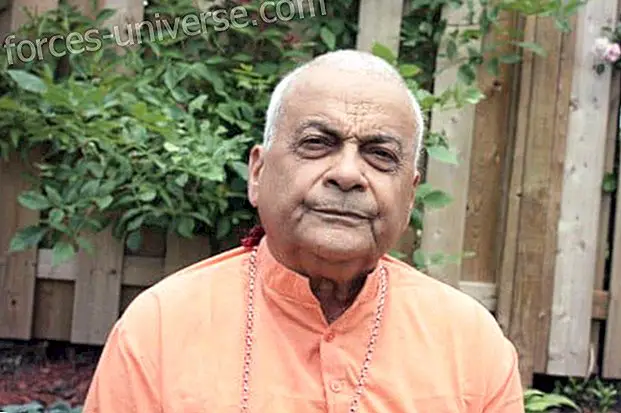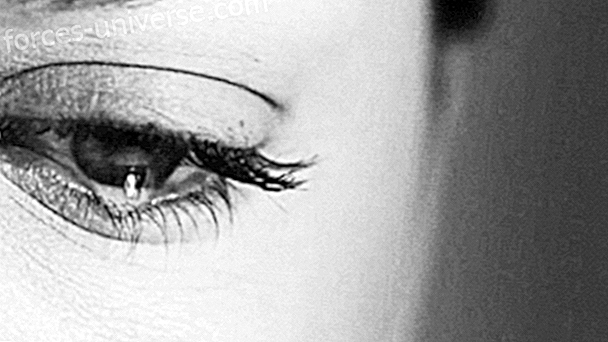 Swami Muktidharma is a yoga teacher of Colombian origin who has spent the last forty years of his life dedicated to teaching and sharing the tradition of Satyananda Yoga. Inspired by the teacher Paramhamsa Satyananda, Swami Muktidharma decided to leave Colombia in 1980 and go to India where he spent sixteen years receiving in-depth training on the techniques of yoga and tantra. In addition, he was co-founder of Anahata Yoga Retreat in New Zealand, where he worked for another sixteen years as a therapist, training those interested in learning more about the yogic lifestyle. A few weeks ago Swami Muktidharma arrived in Toronto and we had the opportunity to talk with him about the positive effects of this practice.
Swami Muktidharma is a yoga teacher of Colombian origin who has spent the last forty years of his life dedicated to teaching and sharing the tradition of Satyananda Yoga. Inspired by the teacher Paramhamsa Satyananda, Swami Muktidharma decided to leave Colombia in 1980 and go to India where he spent sixteen years receiving in-depth training on the techniques of yoga and tantra. In addition, he was co-founder of Anahata Yoga Retreat in New Zealand, where he worked for another sixteen years as a therapist, training those interested in learning more about the yogic lifestyle. A few weeks ago Swami Muktidharma arrived in Toronto and we had the opportunity to talk with him about the positive effects of this practice.
What is yoga?
Yoga is a science and should not be confused with religions. A science of what? Of the life. It is a very old science that contains a lifestyle that promotes evolution at all levels: physical, mental, psychic, spiritual. It is, then, a holistic science that helps us develop in a balanced way by harmonizing the different aspects of our human structure. This is, perhaps, one of the biggest problems in the world today and that is that emotionally we are on one side, mentally we are on the other side and physically we are disconnected from ourselves. There is no cohesion between the different aspects of our human structure and this is what creates imbalance and dissatisfaction.
What is the particularity of Satyananda Yoga with respect to other types of yoga?
First of all it should be clarified that, although Satyananda Yoga is different from other types of yoga, this does not mean that it is better. Personally in this type of yoga I have found a system that gave a scientific approach to practice, but always keeping a simple language and accessible to everyone. The Satyananda Yoga also takes an integral perspective with respect to the human being and that is reflected in the practices. That is, the human being is not only a physical body, we also have intellect, emotions, feelings and all these aspects must be paid attention. That's why in Satyananda yoga we practice asanas (postures and physical movements), pranayamas (breathing exercises), songs and meditations.
What role does breathing play in all this?
There is no yoga practice in which breathing is not used. One breathes to bring energy, because the breath contains energy or prana, that is why it is vital for human life. Proof of this is that you cannot live more than three minutes without breathing. If you spend 40 days without eating, you are likely to survive, the same if you spend three days without taking anything. But you can't live without breathing for more than three minutes. Then it is the nose, in reality, the organ through which we take the main food; when you breathe you are bringing energy into you. When doing yoga exercises, your attention should be focused on coordinating breathing with movements. There is then a tendency to integrate different aspects of you: your attention represents the mind, the breath represents the energy and your movements represent the body. Everything is working at the same time.
So can it be said that breathing is the bridge between the mind and the body?
Of course. There is a relationship between the mind and the body and the bridge between the two is breathing. If you are thinking of something that generates a lot of tension, this is immediately reflected in your breathing. If breathing is agitated, then the heartbeat accelerates and the nervous system is disturbed. All the signals that the brain sends to the body have to do with the way you breathe.
In this sense we could conclude something like "one thinks according to the way one breathes"?
Yes, but you also breathe according to the way you think. There are two levels: the psycho-somatic and the somato-psychic. The psycho-somatic refers to what he said before: if your mind is calm then the breath is too, or if you have many worries your breathing is agitated. Somato-psychic refers to using exercises, relaxation and pleasant stimulations for your body. If you relax physically, if you control your breathing, you can produce an optimal mental state. So, this is a good starting point for those who are very distressed or stressed or having thoughts that make them feel bad. When one is like this, it is useful to observe the breath to bring the body and mind into harmony. That is precisely what happens when people get stressed; The mind separates from the body because communication is lost through breathing. This is why breathing is so important in yoga, it is about giving people tools to start controlling these aspects.
What exactly is meditation and why is there a tendency to think of this practice as something mystical?
I think it is important to make a distinction between the spiritual and the psychic. When you close your eyes and meditate, you will most likely see figures and / or colors at some point. But this does not imply that you are having an experience of spiritual order. You have to think that the mind is very symbolic, thoughts and feelings have a form but that is not how we usually conceive them. These figures or colors that we see when meditating, as I said, should not be given a spiritual meaning, they are only psychic aspects, they are impressions that are in the mind, like archetypes.
And well, of course, meditation is a profound experience, but not necessarily in the sense of finding God. It is an encounter with oneself. What I mean is that no matter who you are, in every human being there is a deep aspect. But not everyone knows how to experience this. In general we prefer to project ourselves, to be outside. We are afraid to see what is inside us and then we cover it and repress it. All this has to do with the ego, because the ego does not want to recognize, does not want to run into aspects that are not convenient for it. But the way to solve life's problems is to see them as they are. For this, meditative techniques are very useful, they help us develop the ability to contact ourselves and see the artifice of fear, for example. Fear is not something that exists solid, outside and by itself, it is something created. And as it is created, it can be undone when you have the exact vision of your existence.
Do you think then that yoga is beneficial for everyone?
Yeah right. It would be beneficial for everyone to take a while to meditate. Especially in this world where we don't have time to stop and reflect, we are running without knowing where we are going. It is important, then, to become aware. Of course, there is no time to do all yoga practices, because we also have other responsibilities, such as work and etc. But yoga is like a buffet, when you go to the buffet you don't eat everything. What I do is help people who enter yoga to see which food suits them best. You do not need to do yoga in quantity, one needs a couple of tools that if used with constancy and discipline, will be of great help.
How long will it be in Toronto? Is there a way to contact you for those who want to take classes with you?
At the moment I will be in Toronto for an indefinite period. And of course, I am always ready to share the universal feeling of the science of yoga with anyone. To contact me you can simply send me an email to
Yoga Master Swami Muktidharma in Toronto | INTERVIEW
Source: http://www.canasanta.com/author/cata/

 Swami Muktidharma is a yoga teacher of Colombian origin who has spent the last forty years of his life dedicated to teaching and sharing the tradition of Satyananda Yoga. Inspired by the teacher Paramhamsa Satyananda, Swami Muktidharma decided to leave Colombia in 1980 and go to India where he spent sixteen years receiving in-depth training on the techniques of yoga and tantra. In addition, he was co-founder of Anahata Yoga Retreat in New Zealand, where he worked for another sixteen years as a therapist, training those interested in learning more about the yogic lifestyle. A few weeks ago Swami Muktidharma arrived in Toronto and we had the opportunity to talk with him about the positive effects of this practice.
Swami Muktidharma is a yoga teacher of Colombian origin who has spent the last forty years of his life dedicated to teaching and sharing the tradition of Satyananda Yoga. Inspired by the teacher Paramhamsa Satyananda, Swami Muktidharma decided to leave Colombia in 1980 and go to India where he spent sixteen years receiving in-depth training on the techniques of yoga and tantra. In addition, he was co-founder of Anahata Yoga Retreat in New Zealand, where he worked for another sixteen years as a therapist, training those interested in learning more about the yogic lifestyle. A few weeks ago Swami Muktidharma arrived in Toronto and we had the opportunity to talk with him about the positive effects of this practice. 




